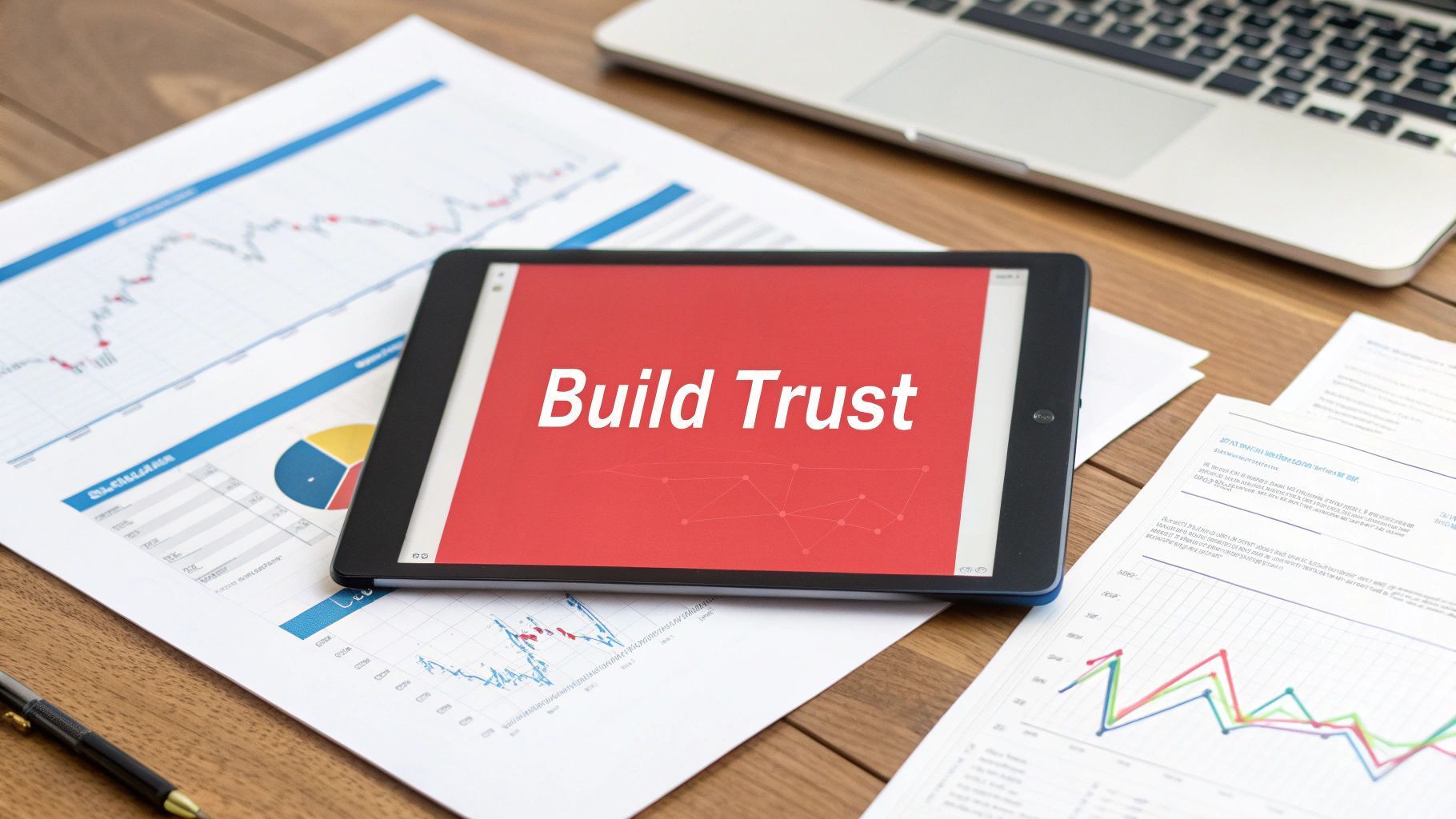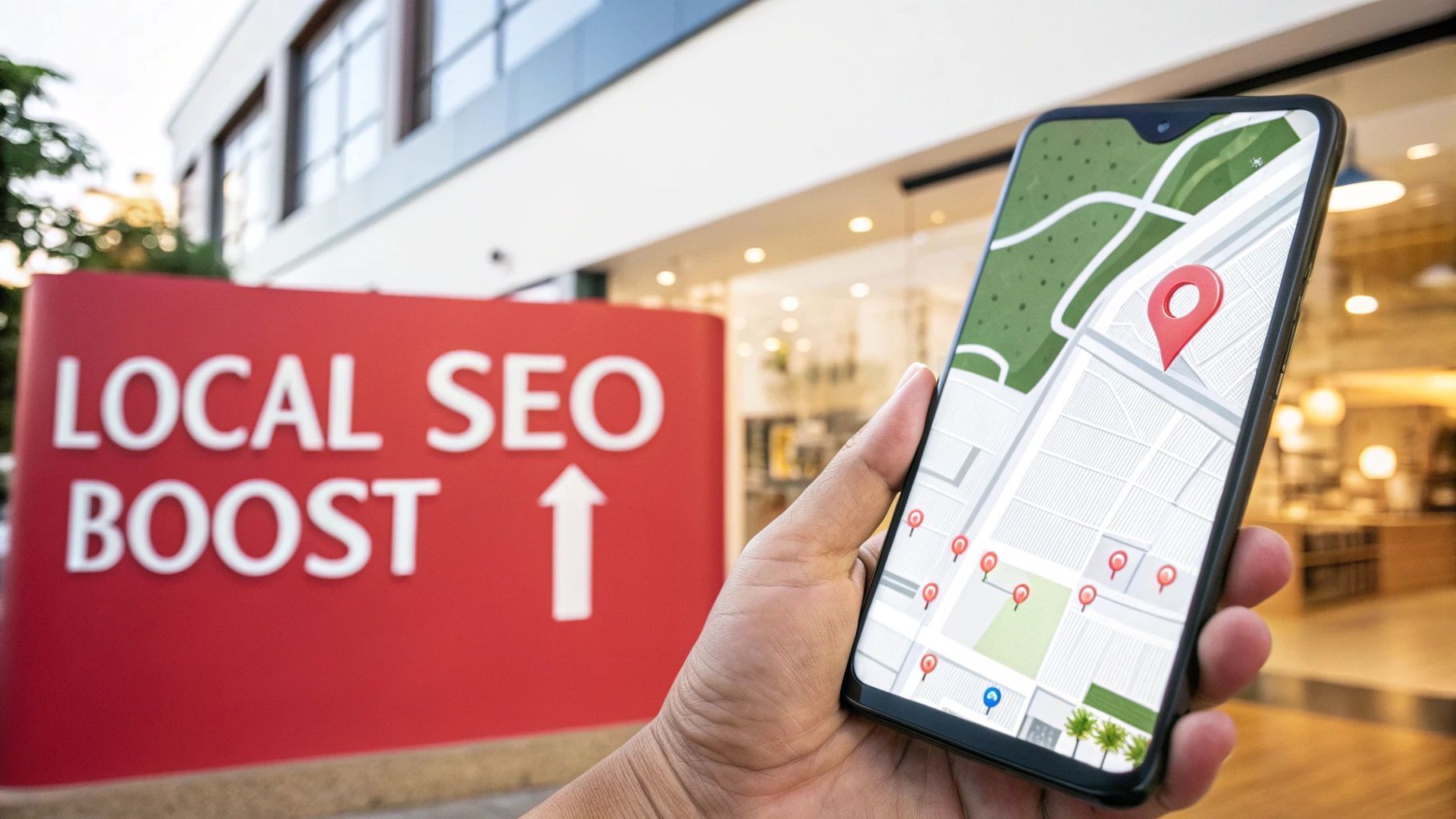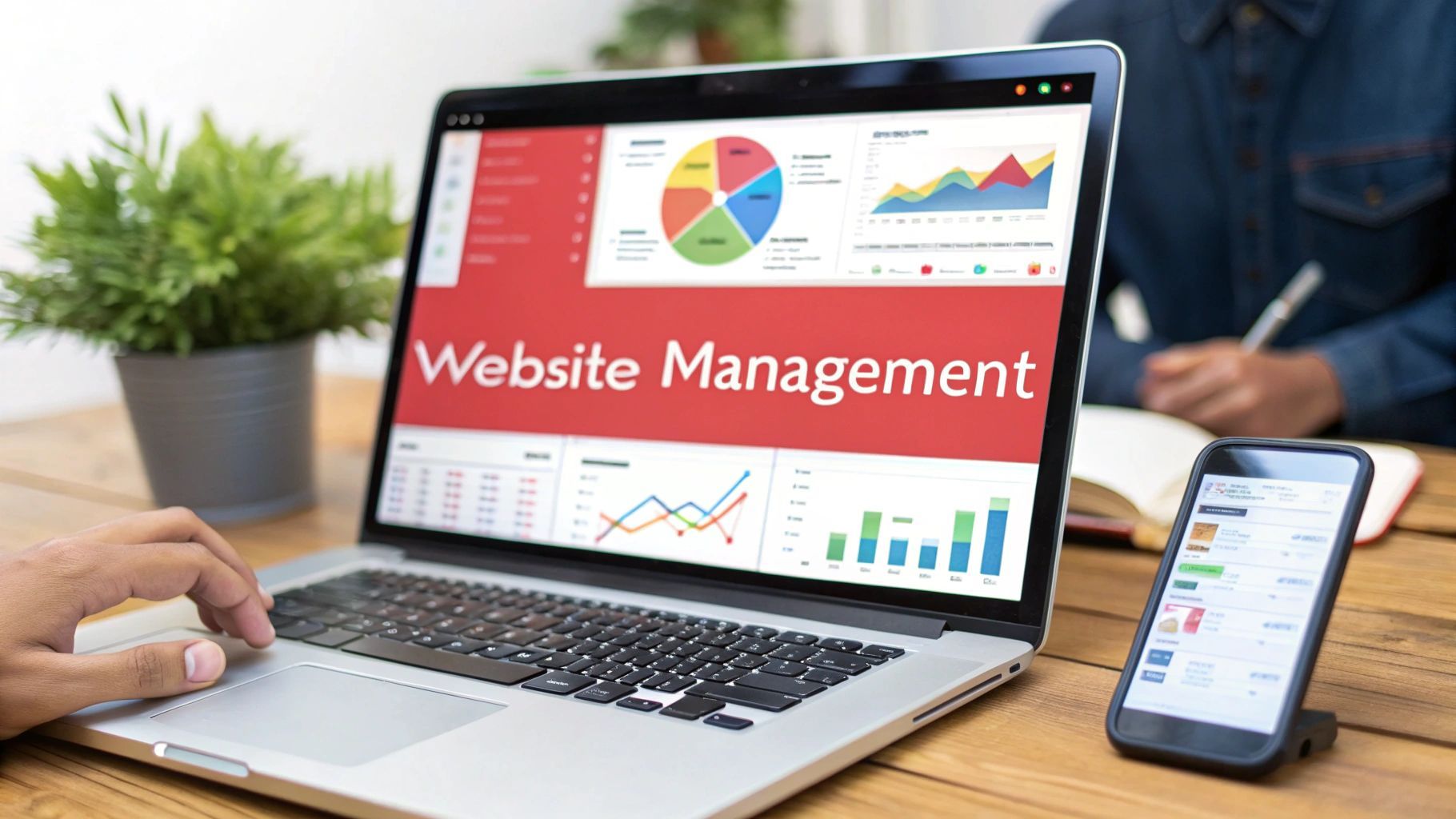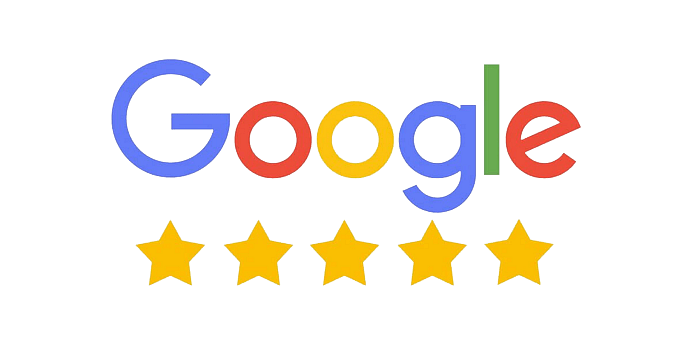Mastering PPC for E-commerce Success
PPC for e-commerce is all about running paid ads on platforms like Google or Amazon to get highly targeted traffic to your online store. It’s a direct line to shoppers who are actively looking for what you sell, making it an incredibly powerful way to boost sales and grow your brand almost overnight.
Why PPC Is Your E-commerce Growth Engine
In the crowded UK e-commerce market, just having a great online shop isn't enough anymore. Building your organic presence takes a huge amount of time but a well-run pay-per-click (PPC) campaign gives you immediate visibility. It lets you compete head-on with the big, established retailers right from day one.
This instant presence means you can start pulling in traffic and sales almost as soon as your campaign goes live. You’re not waiting months for your SEO to kick in. This makes PPC an absolute must-have for things like new product launches or nailing your seasonal promotions.
Target Shoppers with Surgical Precision
One of the biggest wins with PPC is its targeting. You can zero in on specific UK customer demographics, interests and even their past shopping habits. This makes sure your ads are only shown to people who are genuinely in the market for your products.
For instance, a boutique in Manchester selling handmade leather bags can target users in the North West who’ve shown an interest in luxury fashion. That level of precision cuts out wasted ad spend and seriously boosts your return.
Platforms like Amazon take this even further, allowing for hyper-specific targeting within their own ecosystem. If you’re new to this world, getting a handle on what Amazon PPC is and how it works is a great starting point for tapping into this powerful engine.
This infographic really breaks down how PPC acts as a catalyst for an e-commerce business.
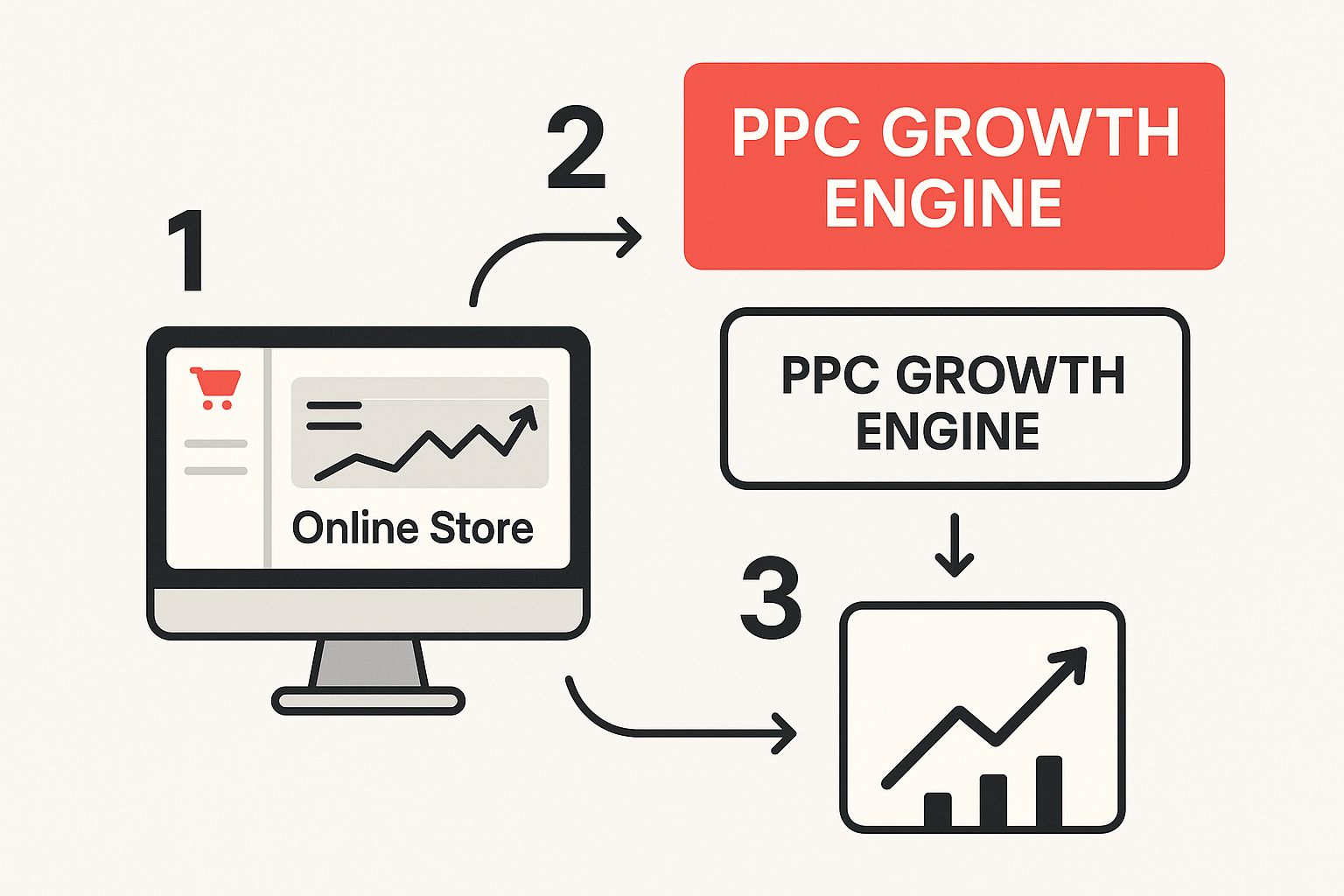
You can see how strategic ad spend directly fuels an increase in traffic, keeps customers engaged and ultimately, drives up revenue. It's a clear cause-and-effect.
Secure Your Market Share in a Competitive Arena
The UK's e-commerce scene is massive and fiercely competitive. It’s projected to hit £141.81 billion in revenue by 2025, making it the largest market in Europe. With British shoppers spending an average of £3,454 online each year, PPC is your key to grabbing their attention at the exact moment they’re ready to buy.
By showing up at the top of search results for high-intent keywords, you’re not just making sales; you’re building your brand. That consistent visibility cements your authority and helps you carve out a lasting slice of the market from your competitors.
Building a Winning E-commerce PPC Foundation
Getting your PPC fundamentals right from the start is non-negotiable for long-term e-commerce success. Think of it less like launching a single campaign and more like building a solid structure that can be scaled and fine-tuned over time. Get this part wrong and you'll be leaking cash down the line.
The initial choices you make—your campaign types, keywords and account organisation—dictate everything that follows. They directly impact ad relevance, costs and ultimately, your return on ad spend. Rushing this stage is a classic mistake I see all too often.
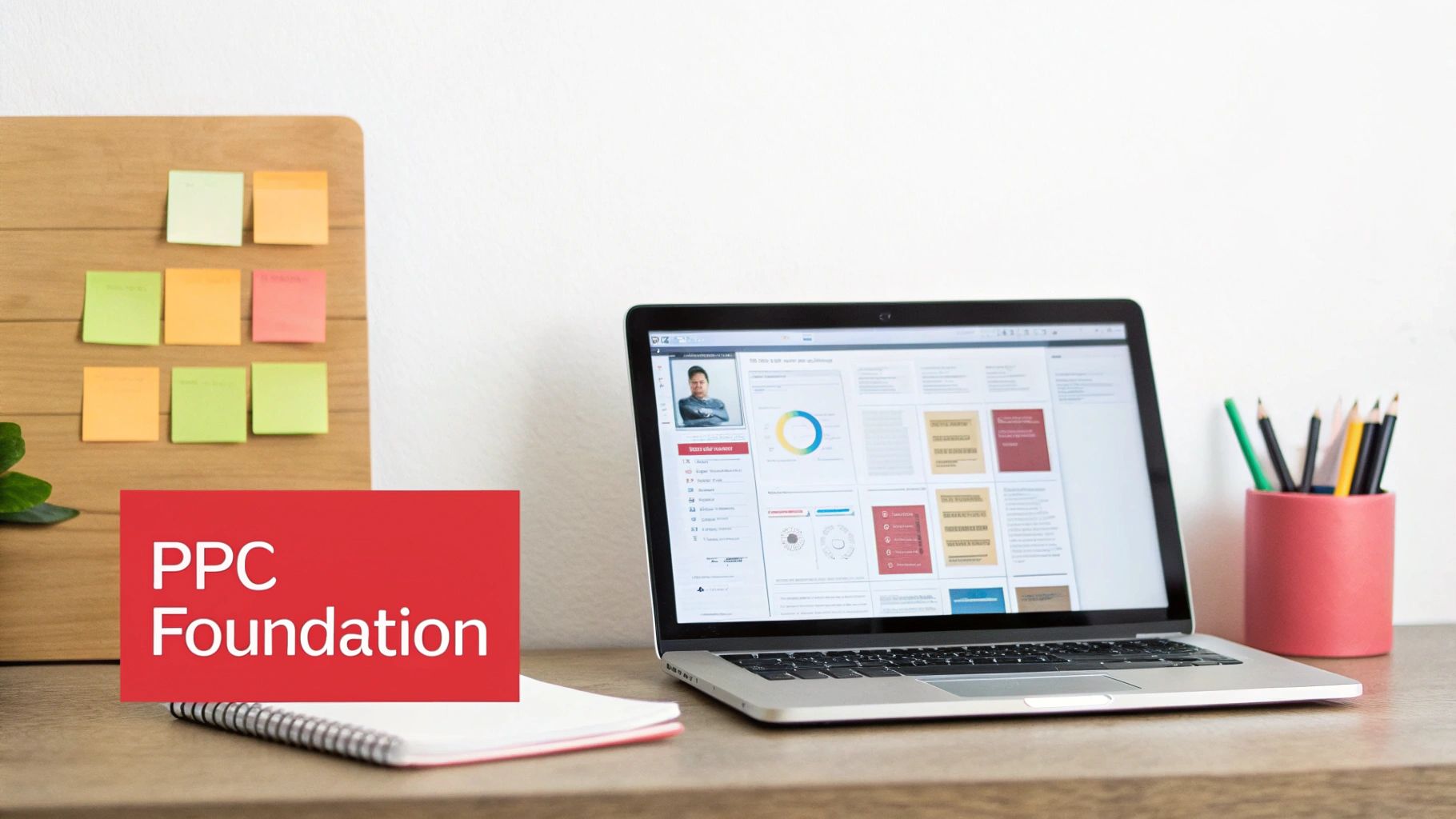
Choosing the Right Campaign Type
Google Ads gives you a few options but for any e-commerce store, three main campaign types really matter. The right choice depends entirely on your goals, your product catalogue and how much hands-on control you're after.
Here’s a quick rundown of the big players:
- Google Shopping Ads: These are the visual, product-first ads you see dominating the top of search results. For e-commerce, they’re often the heaviest hitters because they show the product image, price and your store name upfront, catching the eye of shoppers who are already in buying mode.
- Search Ads: The classic text ads. Triggered by specific searches, they’re perfect for targeting customers with a very precise need. Use them to promote product categories, flash sales or to simply get your brand name in front of the right people.
- Performance Max (PMax): This is Google's all-in-one, AI-powered campaign. It automatically pushes your ads across all of Google's networks—Shopping, Search, YouTube, Display—to sniff out converting customers wherever they might be.
For most online stores just starting out, a combination of Shopping and Search campaigns is the smartest move. Once you've got some solid data under your belt, you can then unleash Performance Max to expand your reach.
Uncovering High-Intent Keywords
Good keyword research is really about getting inside your customer's head. You have to move past the obvious, broad terms and pinpoint the exact phrases people type when they’re ready to pull out their wallet.
Don't just bid on "women's trainers". Dig deeper. Look for long-tail keywords—those longer, more specific phrases that scream buying intent. For instance, someone searching for " buy white Nike Air Force 1 size 6 UK " is miles closer to a sale than someone just browsing for "Nike trainers". The intent is crystal clear.
A winning keyword strategy is built on transactional phrases. Weave in words like "buy", "deal", "discount" and "free delivery", alongside specific product models to capture shoppers in that final, crucial moment of their buying journey.
Structuring Your Account for Success
A well-organised account isn’t just about being tidy; it's vital for maintaining a high Quality Score and keeping your ads relevant. The aim is to group similar products into tightly themed ad groups . This lets you write laser-focused ads that perfectly match the keywords in that group.
Let's say you sell skincare. Don't just chuck everything into one massive ad group. Break it down logically.
- Ad Group 1: Anti-Ageing Serums
- Ad Group 2: Hydrating Moisturisers
- Ad Group 3: SPF 50 Sun Creams
This structure means that when someone searches for "anti-ageing serum", they see an ad that speaks directly to them—not some generic message about your entire skincare line. This sharp relevance boosts click-through rates and drives better performance.
And finally, your ad copy must always shout about what makes you the best choice. Simple hooks like " Free UK Delivery " or " Next-Day Dispatch " can give shoppers that final nudge they need to click your ad instead of a competitor's.
Smart Bidding and Budgeting for Maximum ROAS
Right, let's get into the financial engine of your PPC strategy. The choices you make here—on your bids and your budget—are what will ultimately turn clicks into actual profit. It’s time to move past just spending money and start making calculated investments that are laser-focused on maximising your Return on Ad Spend (ROAS).
First things first, you need a realistic budget. This isn’t about plucking a number from thin air. It's about knowing what you can genuinely afford to invest while still aiming for profitability. Figuring out how much Google Ads might cost for your specific corner of the market is a solid place to start when you're mapping out the initial numbers.
Manual vs. Automated Bidding
When you're just starting out, you’ll hit an early fork in the road: manual or automated bidding?
Manual bidding is exactly what it sounds like. You set the maximum cost-per-click (CPC) for your ads yourself, giving you total control over every penny. It can work well for really small, targeted campaigns where you want to micromanage your spend on a handful of crucial keywords.
For most e-commerce stores, however, automated bidding—or Smart Bidding , as Google calls it—is the only way to go. These strategies lean on Google's own machine learning to optimise for conversions or conversion value in every single auction. Honestly, it saves a phenomenal amount of time and almost always delivers better results than a human ever could.
Here are the main Smart Bidding strategies you should know for e-commerce:
- Maximise Conversions: This tells the algorithm to get you the most sales possible within your set budget. It's a great starting point if you’re new to this and need to gather some solid conversion data.
- Maximise Conversion Value: This is a step up. It tells Google to chase the highest total revenue, not just the highest number of sales. It’s perfect if your products have different price points because the machine learns to go after the customers spending more money.
- Target ROAS (tROAS): This is the holy grail for e-commerce. You set a specific ROAS target—say, 400% —and Google's AI will tweak your bids on the fly to try and hit that average return for every pound you spend.
ROAS: Your North-Star Metric
Forget about vanity metrics like clicks or impressions. In the world of e-commerce, ROAS is the only number that really matters. It tells you, in plain terms, how much money you're making for every pound you put into advertising. The formula couldn't be simpler.
ROAS = (Total Revenue from Ads / Total Ad Spend) x 100
For instance, if you spend £500 on ads and that brings in £2,000 in sales, your ROAS is 400% . That means for every £1 you invest, you’re getting £4 back. Simple as that.
This is where AI is really changing the game in PPC management. For UK e-commerce businesses, AI-powered tools are no longer a luxury; they're essential for smarter budget allocation. They use predictive analytics and real-time bid adjustments to constantly improve ROAS. We're seeing a massive shift from old-school, static bidding to this kind of adaptive, data-led decision-making. If you want to grow in today's crowded market, you have to keep up. You can find more on how AI and ROAS strategies are powering success over at spaceandtime.co.uk.
Improving your ROAS isn't a one-and-done task; it’s a process of constant tweaking. You need to be regularly analysing which products, campaigns and keywords are pulling their weight and which aren't. Then, you simply funnel more of your budget towards the winners. These small, data-backed adjustments are what will ultimately transform the profitability of your entire PPC operation.
Crafting Ads and Landing Pages That Convert
A click is only the first step. Getting a sale? That's what really matters.
This is where your ad copy and landing pages need to work in perfect harmony. They’re responsible for turning that initial flicker of interest into a purchase, creating a seamless journey from the search results right through to the checkout.
Think of your ad's headline and description as a promise you're making to a potential customer. It has a tough job to do – grabbing attention in a crowded space while also pre-qualifying the visitor.
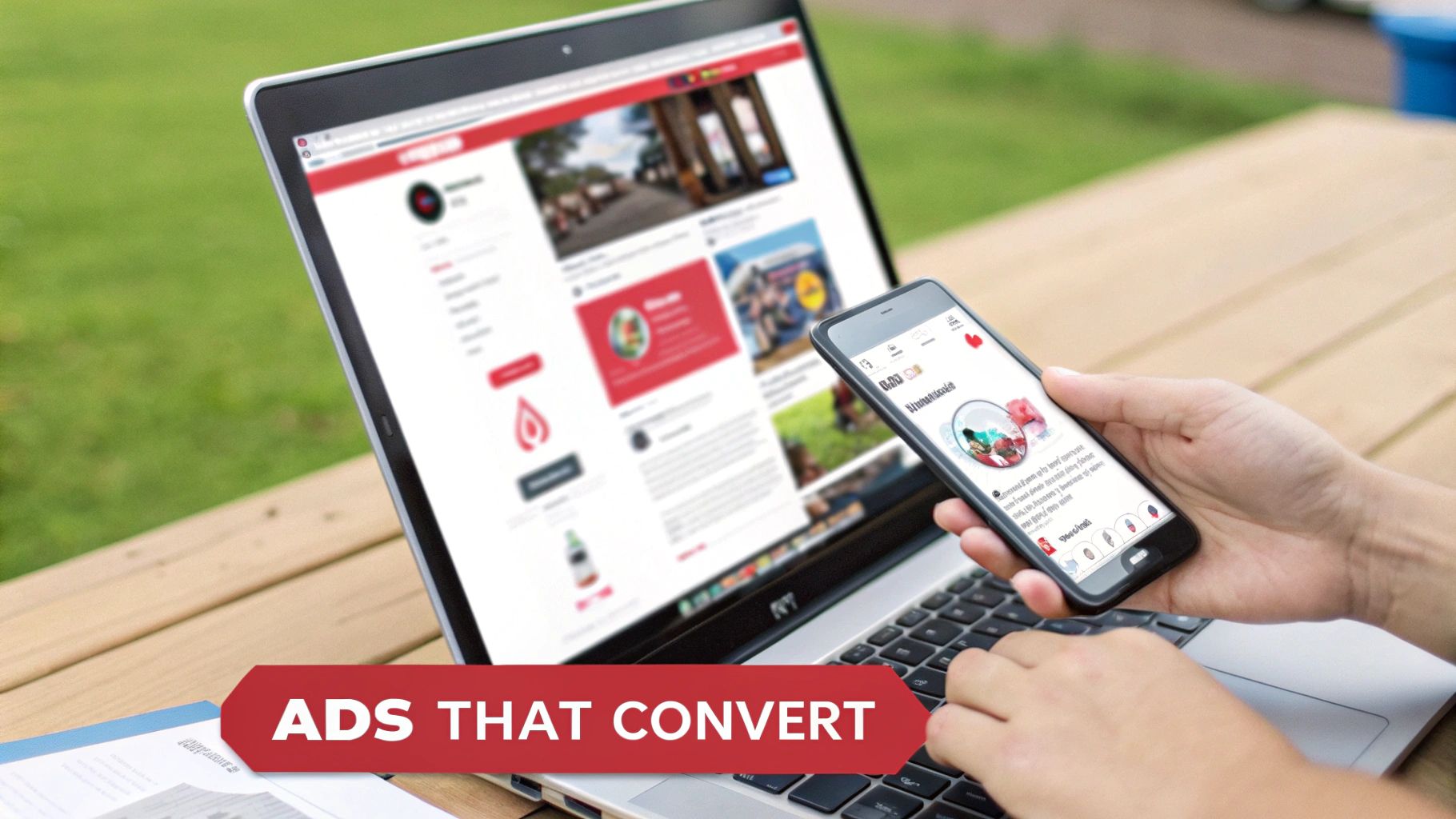
Achieving the Perfect Message Match
Once someone clicks your ad, the landing page they land on must instantly deliver on that promise. This is a concept we call ‘message match’ and it's non-negotiable.
If your ad shouts about a " 50% Off Summer Sale on Linen Shirts " then your landing page had better feature that exact offer, front and centre. Any disconnect here is jarring for the user and a huge reason for abandoned visits. The headline, the images and the call-to-action on the landing page should all echo what the ad said, creating a frictionless path to purchase.
For a deeper dive, our guide on the anatomy of a high-converting landing page breaks down these crucial elements. Getting the message match right is just one piece of the puzzle; understanding the broader principles of optimizing your e-commerce landing pages is paramount for driving sales and getting the most out of your ad spend.
Prioritising the Mobile Experience
Let's be clear: the shift to mobile isn't a trend anymore. It's the standard. Mobile PPC now dominates the UK ad landscape and with good reason. By 2025, mobile ad spend is predicted to account for a massive 66% of all digital ad spending .
This means your landing pages can't just be 'mobile-friendly'. They need to be designed from the ground up with a mobile-first mindset. People on their phones behave differently and they need an experience tailored to them.
Your product page must load in under three seconds on a mobile device. Every extra second of load time dramatically increases the chance of a user bouncing back to the search results.
Here’s a quick checklist to help you nail the essentials.
Landing Page Optimisation Checklist
Think of this table as your pre-flight check before you send any traffic to your landing pages. Getting these elements right is fundamental to turning clicks into customers, especially on mobile.
| Element | Best Practice | Why It Matters |
|---|---|---|
| Headline | Make it identical or a close variation of the ad headline. | Instantly reassures the user they're in the right place. |
| Call-to-Action (CTA) | Use a large, thumb-friendly button with clear text (e.g. 'Add to Basket'). | Reduces friction and makes it easy to take the next step. |
| Imagery | Use high-resolution product photos that are zoomable. | Shoppers can't touch the product so visuals are critical. |
| Load Speed | Aim for under 3 seconds on a 4G connection. | Slow pages kill conversions. Users won't wait around. |
| Forms/Checkout | Keep forms short. Offer guest checkout and mobile wallets (Apple Pay). | A long, complex checkout is a major cause of abandoned carts. |
| Navigation | Use a collapsed 'hamburger' menu. Avoid complex menus. | Keeps the focus on the product and the purchase path. |
Ticking these boxes isn't just about good design; it's about respecting your user's time and making it as easy as possible for them to buy from you. Don't let a clunky mobile experience undo all the hard work you put into your ad campaigns.
Analysing Performance to Scale Profitably
Getting your campaigns live is really just the starting whistle. The real art of profitable PPC for e-commerce comes down to how you read the data and more importantly, how you react to it.
Data is your closest ally here. It’ll show you in plain sight what’s hitting the mark, what's falling flat and where your best opportunities for growth are hiding.
Without a solid grip on performance analysis, you’re basically just guessing with your money. You could be pumping cash into campaigns that look busy but are quietly losing you money on every single sale. Smart, data-driven decisions are what separate the e-commerce stores that scale from the ones that just tread water.
Tracking the Metrics That Actually Matter
It’s incredibly easy to get swamped by the ocean of metrics inside Google Ads. To keep your focus squarely on profit, you need to zero in on the key performance indicators (KPIs) that have a direct impact on your bank balance. These are the numbers that tell the real story.
Every e-commerce manager should have these metrics burned into their brain:
- Return on Ad Spend (ROAS): We've mentioned it before but this is the ultimate measure of how well your ads are working. It tells you exactly how much revenue you’re making for every pound you spend.
- Cost Per Acquisition (CPA): This is your average cost to win a single sale. Keeping a close watch on your CPA is vital to make sure your ad spend is sustainable against your product margins.
- Conversion Rate: This is the percentage of people who click your ad and go on to make a purchase. A consistently low conversion rate can be a huge red flag, pointing to problems with your landing page or a disconnect between your ad copy and your offer.
Getting to grips with these numbers is the first step. True mastery, though, comes from using them to steer your strategy. If you want to go deeper, our guide on mastering marketing performance metrics is a brilliant resource for learning how to interpret and act on this crucial data.
Spotting Winners and Cutting Losers
It won't take long for your Google Ads account to reveal which products, keywords and campaigns are driving the most value. Your job is to act like a savvy portfolio manager: funnel more budget towards your high performers and be ruthless about cutting the ones that are lagging.
Let’s say you see your "vintage leather jackets" campaign is bringing in a 600% ROAS but your "suede boots" campaign is limping along at 150% . The decision here is pretty straightforward. You should push more budget towards the jackets to hoover up more of that profitable traffic. At the same time, you either pause the boots campaign or dig into why it isn't converting.
A classic mistake is spreading your budget too thinly across too many campaigns. You have to be decisive. It’s far more profitable to double down on a few proven winners than to keep a dozen mediocre campaigns on life support.
The Power of A/B Testing
Continuous improvement is the name of the game in PPC. A/B testing, also known as split testing, is your best tool for systematically refining your campaigns over time. It’s simple: you run two slightly different versions of an ad or landing page to see which one performs better.
You can test almost anything:
- Ad Headlines: Does a headline screaming "Free Delivery" get more clicks than one that highlights "5-Star Reviews"? Test it.
- Landing Page Images: Does a lifestyle shot of your product convert better than a clean, crisp studio photo? Let the data decide.
- Call-to-Action Buttons: Does "Buy Now" outperform "Add to Basket"? A simple test will tell you.
By making these small, incremental changes and measuring the results, you can consistently lift your conversion rates and improve your ROAS. This creates a powerful feedback loop where every test teaches you a lesson, helping you scale your campaigns responsibly and profitably.
Got Questions About E-commerce PPC? We've Got Answers
Jumping into paid advertising can feel like a big leap, especially when it’s your own money on the line. It's totally normal to have questions. In fact, most of the e-commerce owners we work with start by asking the same things.
They’re usually trying to get a handle on the practical stuff: how much to spend, which ads actually work and when they can expect to see a return. Getting these fundamentals right from the start is what separates the campaigns that fly from the ones that flop.
How Much Should I Actually Spend on PPC?
Honestly, there’s no magic number here. The right budget for you depends on how competitive your market is, what you're trying to achieve and how much your products sell for.
A smart way to figure out a starting point is to work backwards from your target Cost Per Acquisition (CPA) . That's just a fancy way of asking: "How much am I willing to pay to get one sale?"
Let's say you want to generate 50 sales next month and you're comfortable paying £20 for each one. That gives you a logical starting budget of £1,000 . The best approach is always to start small, see what works and then double down on the winners.
The goal isn't just to spend money or get clicks; it's to get a positive Return on Ad Spend (ROAS) . Focus on profitability from day one, not just traffic. That discipline is what makes PPC sustainable in the long run.
Search Ads vs. Shopping Ads: Which One Is Better?
This is a classic question but it’s not really an "either/or" situation. Think of them as two essential tools in your toolbox. A solid e-commerce PPC strategy needs both, as they do different jobs.
Google Shopping ads are almost always the star performers for online stores. Why? Because they’re visual. They put your product image, price and brand name right there in the search results. They’re brilliant for catching the eye of someone who is ready to buy.
On the other hand, Google Search ads are text-based and fantastic for targeting people with very specific, long-tail searches. They're perfect for promoting whole product categories, shouting about a special offer or for products where the visuals aren't the main selling point. Using them together gives you maximum coverage.
How Long Until I Start Seeing Results?
You’ll see data—clicks, impressions, traffic—almost as soon as your campaigns go live. But turning that traffic into consistent, profitable sales takes a little patience.
Think of the first few weeks as your 'data-gathering' phase. This is when you learn which keywords are duds, which ad copy connects and which audiences are actually buying.
You can definitely expect to see some initial sales within the first month. But realistically, it often takes about three months of tweaking, optimising and improving your Quality Score to get to a place of stable, positive ROAS. Patience and data-driven decisions are everything here.
Ready to grow your online store with a PPC strategy that actually delivers? The team at Superhub specialises in creating bespoke campaigns that drive real results. Find out more about our digital marketing services.

